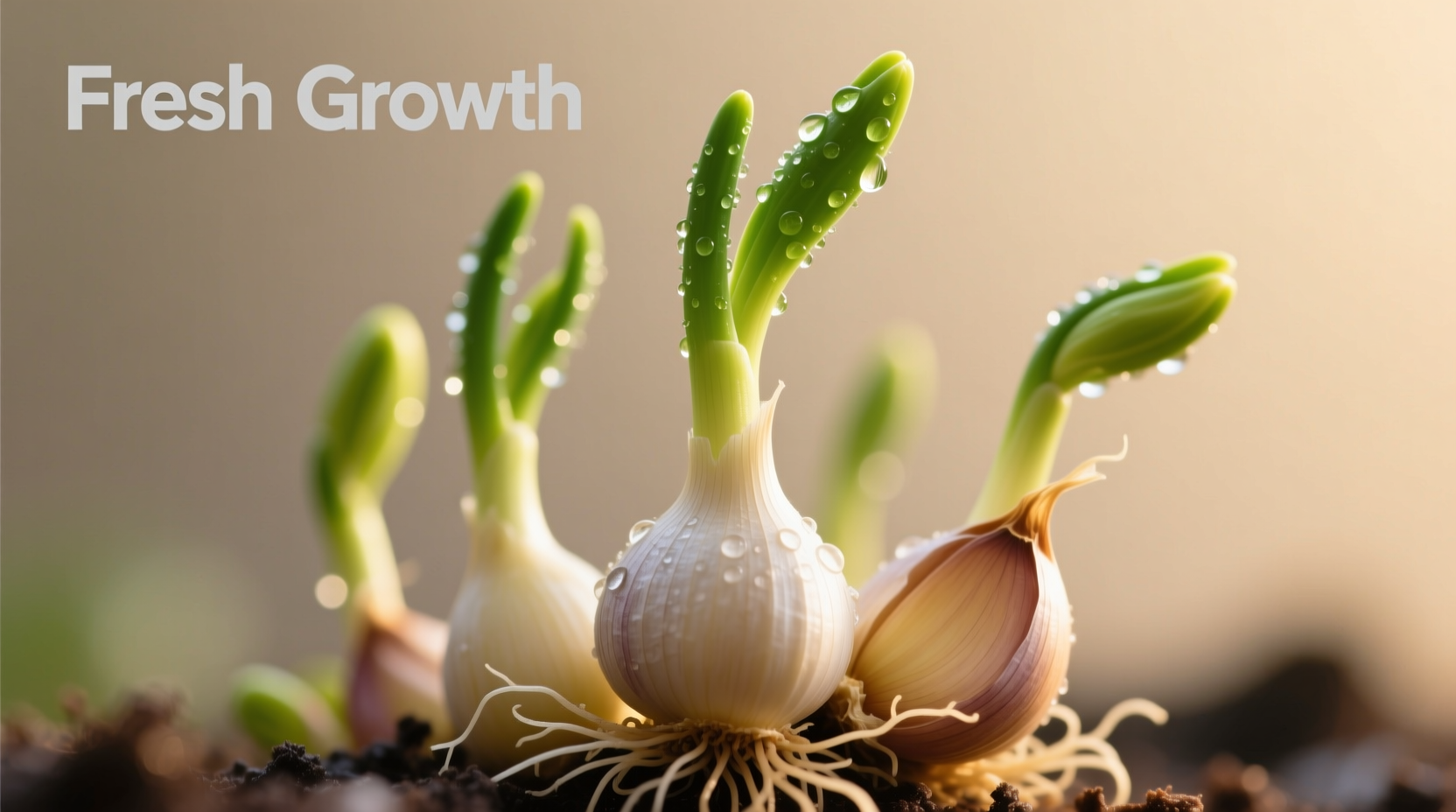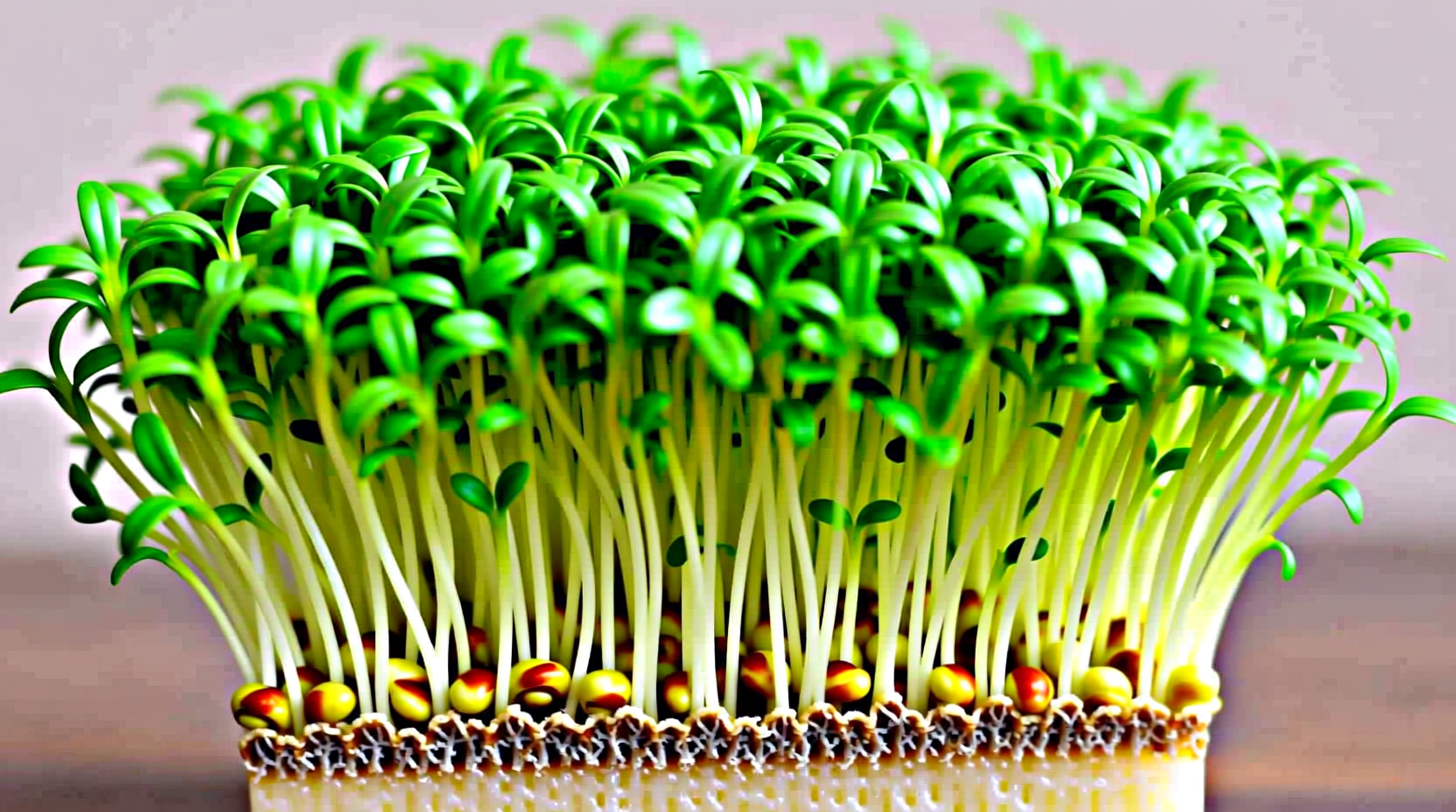Understanding Garlic Sprouting: Nature's Process
Garlic sprouting is a completely natural biological process that occurs when cloves are exposed to warmth and humidity. As garlic ages, the dormant embryo inside the clove activates and begins growing a green shoot through the center. This isn't mold or decay—it's the garlic plant's attempt to reproduce.
Many home cooks mistakenly discard sprouted garlic, thinking it's spoiled. In reality, sprouting indicates freshness rather than spoilage. Properly stored garlic typically begins sprouting after 2-3 weeks at room temperature. The sprouting process actually triggers biochemical changes that increase certain beneficial compounds while decreasing others.
Is Sprouted Garlic Safe? The Complete Safety Assessment
According to the U.S. Food and Drug Administration's food safety guidelines, sprouted garlic presents no food safety risks unless accompanied by other signs of spoilage. The green sprout itself contains higher concentrations of certain antioxidants compared to fresh garlic, as documented in a 2013 study published in the Journal of Agricultural and Food Chemistry.
| Condition | Safe to Eat? | Recommended Action |
|---|---|---|
| Garlic with small green sprout, firm texture | Yes | Remove sprout if bitter, use clove normally |
| Garlic with large green sprout, slightly soft | Yes | Remove sprout, use immediately in cooked dishes |
| Garlic with yellow/brown sprouts, soft spots | No | Discard entire clove |
| Garlic with visible mold, slimy texture | No | Discard entire bulb immediately |
Nutritional Changes in Sprouted Garlic
Research shows that sprouted garlic undergoes significant biochemical changes. The 2013 Journal of Agricultural and Food Chemistry study found that garlic sprouts develop 4-5 times more antioxidant activity than fresh garlic after 5 days of sprouting. These antioxidants help protect cells from damage and may provide enhanced health benefits.
However, allicin—the compound responsible for garlic's characteristic flavor and many health benefits—decreases as garlic sprouts. This explains why sprouted garlic often has a milder, sometimes bitter taste compared to fresh cloves. The green sprout itself tends to be particularly bitter, which is why many chefs recommend removing it before use.

Practical Handling Guide for Sprouted Garlic
When you encounter sprouted garlic in your kitchen, follow these professional chef-tested steps:
- Inspect carefully: Check for firmness and absence of mold or soft spots
- Remove the sprout: Use a small knife to cut a shallow slit down the center and remove the green shoot
- Taste test: Sample a tiny piece to assess bitterness before adding to your recipe
- Adjust usage: Use sprouted garlic in cooked dishes rather than raw applications where bitterness is more noticeable
- Use promptly: Sprouted garlic has a shorter remaining shelf life than fresh cloves
When Sprouted Garlic Becomes Unsafe
While sprouting itself isn't dangerous, certain conditions indicate garlic has spoiled and should be discarded. According to USDA food safety recommendations, discard garlic if you notice:
- Mold growth (white, green, or black fuzzy patches)
- Soft, mushy texture or dark yellow/brown spots
- Unpleasant sour or rancid odor
- Excessive moisture or slimy coating
These signs indicate microbial growth that could potentially cause foodborne illness. Unlike simple sprouting, these conditions represent actual spoilage that makes the garlic unsafe to consume.
Preventing Premature Sprouting
To extend your garlic's shelf life and delay sprouting:
- Store in a cool, dark, dry place with good air circulation
- Avoid refrigeration (causes premature sprouting in whole bulbs)
- Keep bulbs intact until ready to use (separated cloves sprout faster)
- Never store in plastic bags (traps moisture)
- Consider using a terra cotta garlic keeper for optimal conditions
Special Considerations for Vulnerable Populations
While sprouted garlic is generally safe for most people, certain populations should exercise extra caution. Those with compromised immune systems, pregnant women, and young children should avoid consuming garlic showing any signs of spoilage beyond simple sprouting. The Centers for Disease Control specifically recommends that vulnerable populations follow stricter food safety guidelines to prevent foodborne illness.
Maximizing Flavor from Sprouted Garlic
Chefs have developed techniques to make the most of sprouted garlic:
- Roast whole sprouted cloves to mellow bitterness and create creamy texture
- Use in long-simmered sauces where bitterness dissipates
- Make garlic-infused oil with sprouted cloves (discard garlic after infusion)
- Plant sprouted cloves to grow your own garlic greens
- Combine with acidic ingredients like lemon juice to balance bitterness
Common Misconceptions About Sprouted Garlic
Several myths persist about sprouted garlic that lead to unnecessary food waste:
- Myth: Sprouted garlic is toxic - Fact: Sprouting creates no harmful compounds
- Myth: The green sprout is mold - Fact: It's a living plant shoot
- Myth: Sprouted garlic has lost all nutritional value - Fact: Some nutrients increase while others decrease
- Myth: All sprouted garlic tastes bad - Fact: Many cuisines intentionally use sprouted garlic for specific flavor profiles











 浙公网安备
33010002000092号
浙公网安备
33010002000092号 浙B2-20120091-4
浙B2-20120091-4